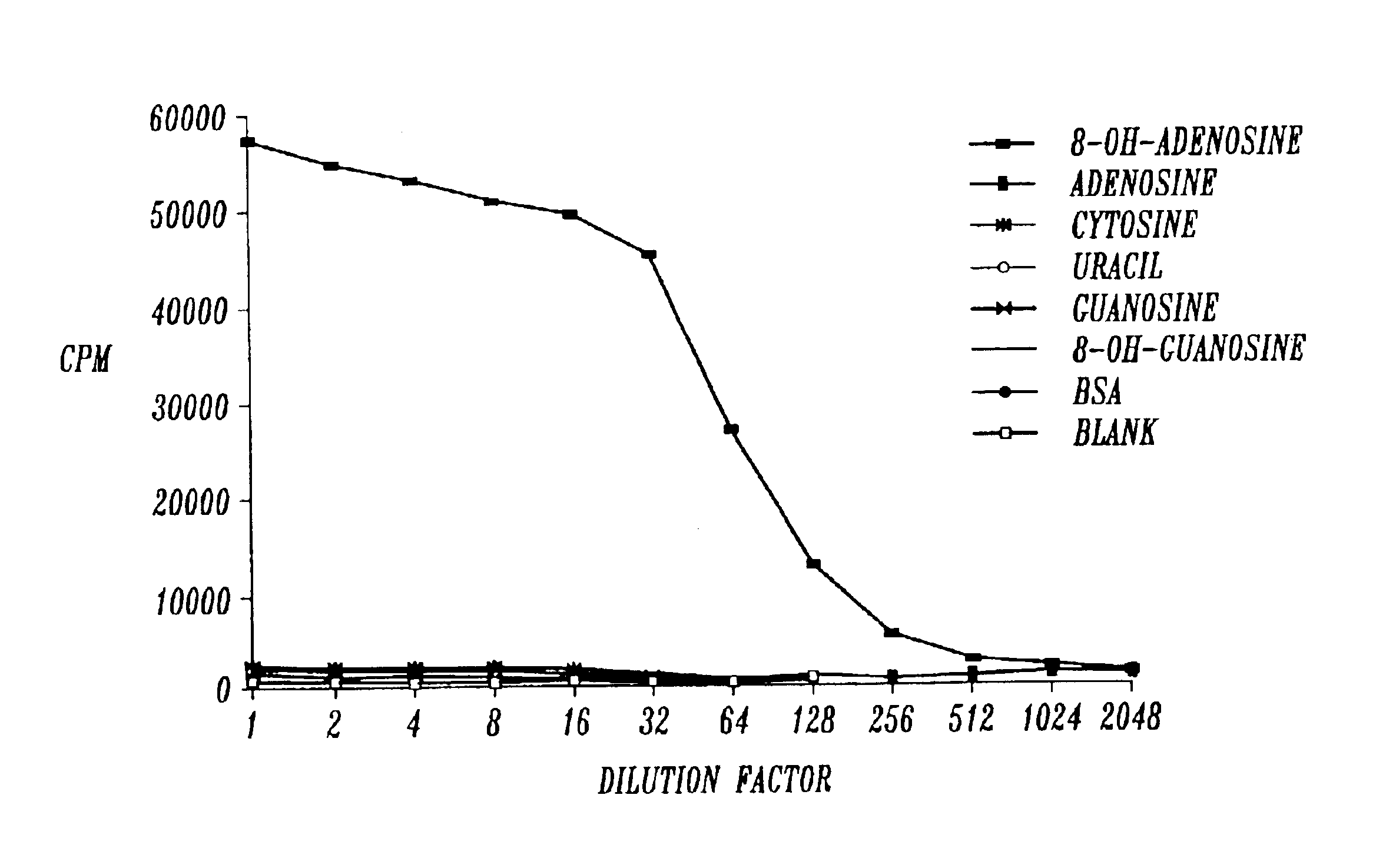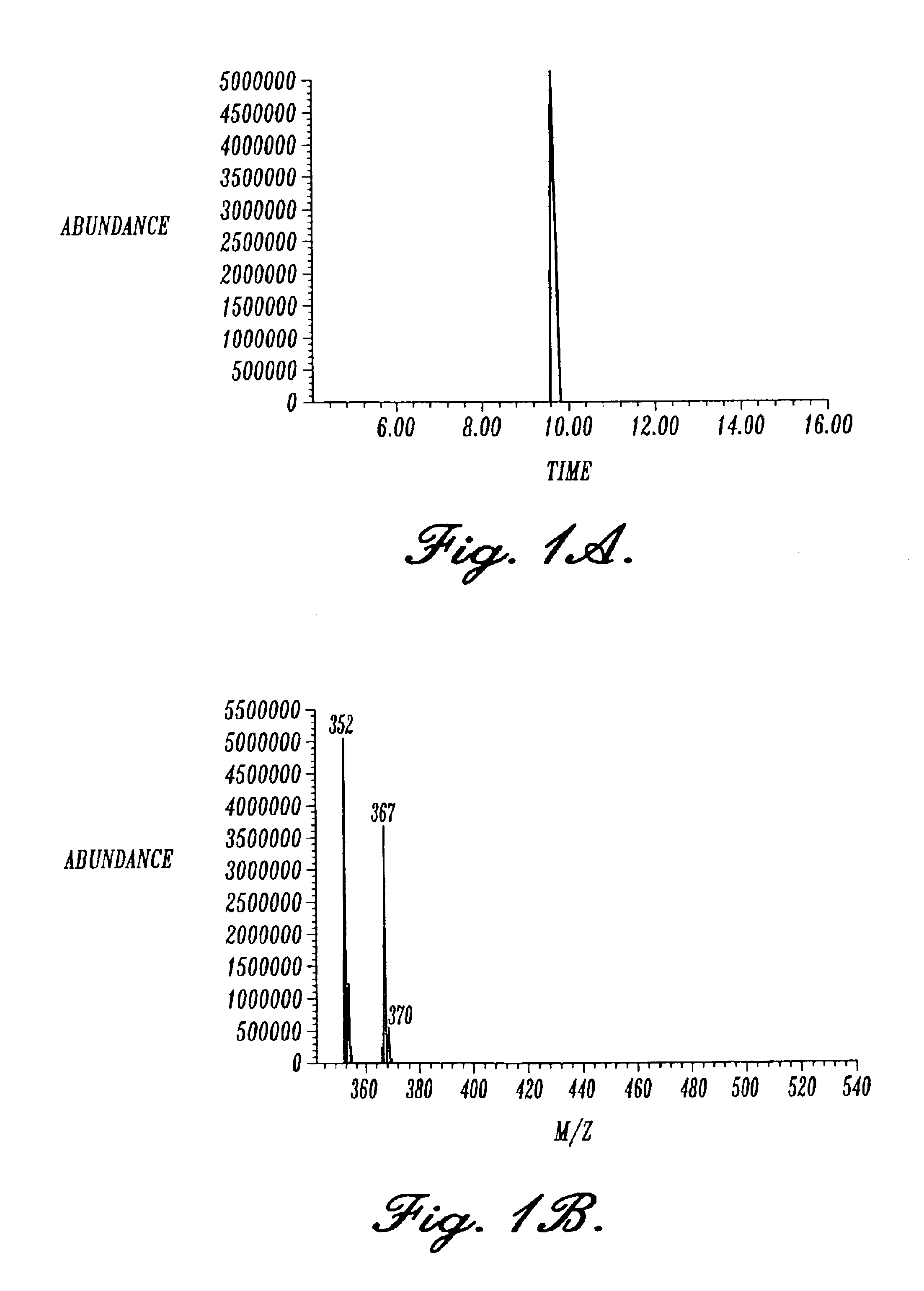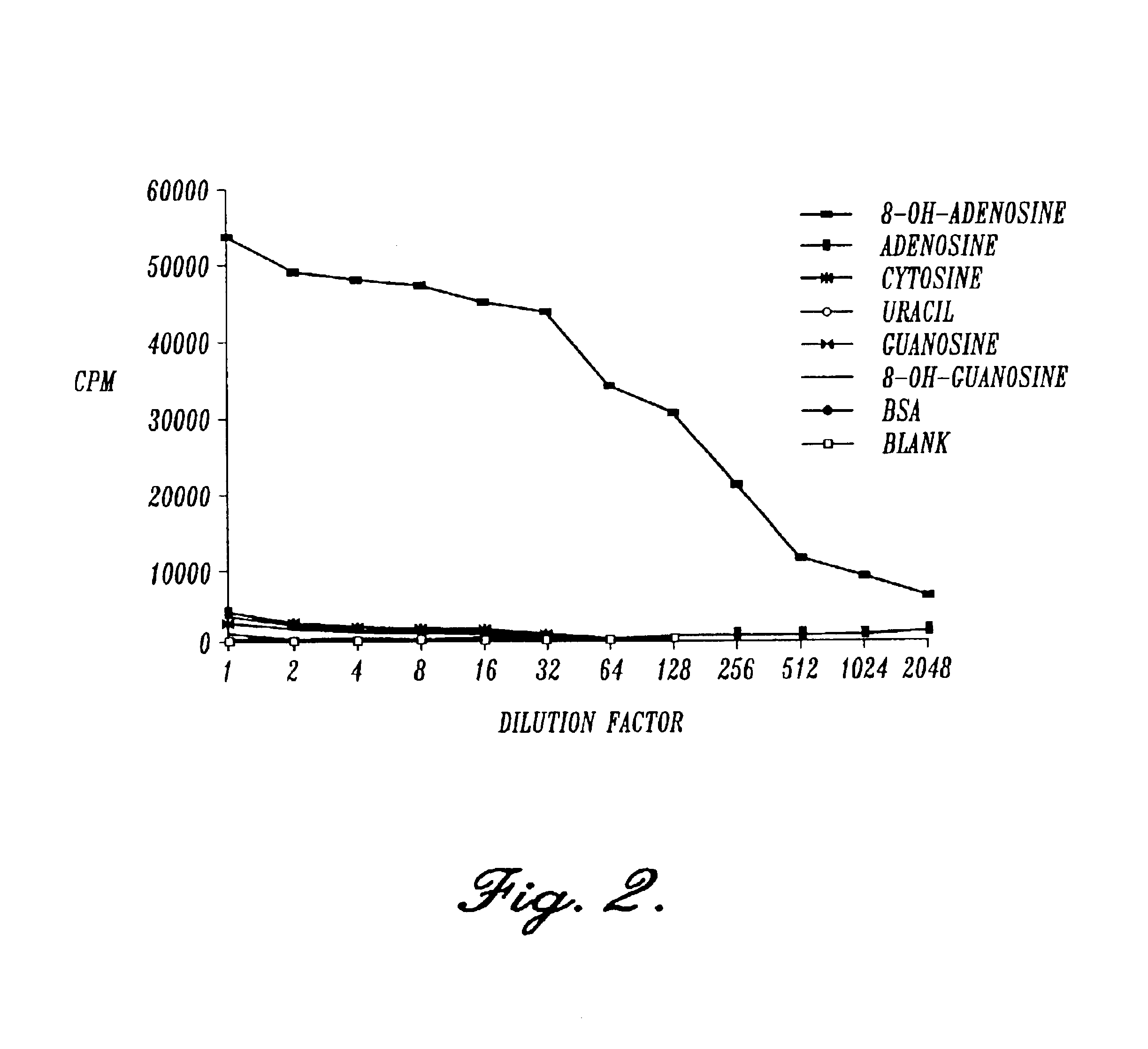Detection and quantitation of 8-OH-adenine using monoclonal antibodies
a technology of monoclonal antibodies and 8-oh-adenine, which is applied in the field of detection and quantitation of 8-oh-adenine using monoclonal antibodies, can solve the problems of lack of specificity of polyclonal antibodies, inability to detect assays using such antibodies, and inability to detect oxygen free radicals
- Summary
- Abstract
- Description
- Claims
- Application Information
AI Technical Summary
Benefits of technology
Problems solved by technology
Method used
Image
Examples
example 1
Preparation of 8-OH-adenosine
[0109]8-OH-adenosine was prepared according to the method previously described in Cho et al.(1991). 8-Br-Adenosine (14 mmol) (Sigma, St. Louis, Mo.) was dissolved in 40 ml of dry DMSO and added to a mixture containing sodium benzyloxide. This reagent was made by reacting 1 g of sodium metal with 35 ml of benzyl alcohol in 100 ml of DMSO. The reaction mixture was heated at.65° C. for 24 hours, cooled to room temperature, acidified with glacial acetic acid, and poured into 1 L of anhydrous ether. Preparation of 8-OH-adenosine is a single step reaction due to the acid labile nature of the initial C8-benzyloxylation product which yields 8-OH-adenosine directly. The precipitate was collected, dissolved in methanol, and absorbed onto 5 g of silica gel (Merck, Darmstadt, Germany). The solvent was removed on a rotary evaporator, and the residue applied to a 500 ml bed volume silica gel column in a solvent composed of CHCl3:CH3OH (4:1). The column was eluted with...
example 2
Coupling of 8-OH-adenosine to Keyhole Limpet Hemocyanin (KLH) and Bovine Serum Albumin (BSA)
[0110]The 8-OH-adenosine product can be readily coupled to carrier proteins through available amino groups. Coupling of this hapten to carrier protein was conducted through the ribose moiety of the nucleoside after mild oxidization by NaIO4 at pH 4.5 using a sodium phosphate buffer. The progress of the oxidation reaction was followed by the change in mobility of the UV-absorbing spots after thin layer chromatography on silica gel plates using a solvent system composed of CHCl3:CH3OH (2:1). The oxidized product migrates as a faster moving spot on the chromatogram. This introduces vicinal aldehyde groups capable of forming Schiff bases with primary amines.
[0111]The antigen for immunization was prepared by Schiff base formation with lysine groups of keyhole limpet hemocyanin (KLH) followed by reduction with NaCNBH3. the antigen for hybridoma screening was prepared by coupling the IO4− oxidized d...
example 3
Preparation of Anti-8-OH-Ade Antibodies
[0113]The methods employed were standard procedures as described in the laboratory manual Harlow et al. (1988). Balb / c mice were injected subcutaneously in multiple sites with 8-OH-adenosine conjugated keyhole limpet hemocyanin. The immunogen was prepared by mixing 2 mg of 8-OH-adenosine-KLH conjugate in 900 μl of phosphate buffered saline (PBS), 100 μl of 2 mg / ml MDP (N-acetylmuramy 1-L-alanyl-D-isoglutamine (Pierce, Rockford, Ill.), and 1 ml of Freund's incomplete adjuvant (Sigma, St. Louis, Mo.) followed by emulsification. The mice were immunized 4 times at 10 day intervals with 100 μl of immunogen, the last 3 days before fusion. Spleen cells were isolated and fused with mouse X63 myeloma cells.
PUM
| Property | Measurement | Unit |
|---|---|---|
| Mass | aaaaa | aaaaa |
| Substance count | aaaaa | aaaaa |
Abstract
Description
Claims
Application Information
 Login to View More
Login to View More - R&D
- Intellectual Property
- Life Sciences
- Materials
- Tech Scout
- Unparalleled Data Quality
- Higher Quality Content
- 60% Fewer Hallucinations
Browse by: Latest US Patents, China's latest patents, Technical Efficacy Thesaurus, Application Domain, Technology Topic, Popular Technical Reports.
© 2025 PatSnap. All rights reserved.Legal|Privacy policy|Modern Slavery Act Transparency Statement|Sitemap|About US| Contact US: help@patsnap.com



